The AMD Ryzen 5 lineup has evolved dramatically over the past few years, with each generation offering significant improvements in architecture, speed, efficiency, and features. Whether you’re a gamer, content creator, or everyday user, there’s a Ryzen 5 processor tailored for your needs. This guide will walk you through a detailed comparison of popular Ryzen 5 models, highlighting their specs, performance benchmarks, and ideal use cases.
Table of Contents
Also check out post about Top 6 Best Air Conditioners below Rs 30000
This post contains affiliate links. If you make a purchase through these links, we may earn a commission at no extra cost to you.“
The Evolution of AMD Ryzen 5 Processors: From Zen to Zen 5
Since its debut in 2017, the AMD Ryzen 5 series has reshaped the landscape of desktop CPUs, offering powerful multi-core performance at highly competitive prices. The Ryzen 5 family sits squarely in the middle of AMD’s consumer desktop CPU hierarchy—between Ryzen 3 (entry-level) and Ryzen 7 (enthusiast-level)—and has consistently delivered excellent value for gamers, content creators, and general-purpose users.
The journey of the Ryzen 5 series has seen numerous architectural overhauls. It started with Zen and Zen+ (e.g., the Ryzen 5 1600 and 2600 series), progressed to Zen 2 with the likes of the 3600, and then surged with Zen 3—arguably the most impactful leap in AMD’s history—represented by models like the 5600 and 5600X. More recently, AMD launched Zen 4 and Zen 5, which power the AM5 socket-based chips such as the Ryzen 5 7600X and 9600X. These newer generations offer not only performance boosts but also compatibility with DDR5 memory, PCIe 5.0, and advanced overclocking features.
Ryzen 5 Use Cases: One CPU Family, Many Applications
What makes Ryzen 5 CPUs special is their versatility. With 6 cores and 12 threads as a common standard across nearly all models, they strike a sweet spot between power and price. These processors are ideal for users who need a responsive system but don’t necessarily want to spend premium prices for high-end CPUs.
Gaming
Ryzen 5 processors, especially those from the 5000, 7000, and 8000 series, excel in gaming. Their strong single-thread performance ensures that modern AAA titles run smoothly, especially when paired with a capable GPU. The Ryzen 5 5600X and 7600X, for instance, are widely regarded as some of the best value-for-money gaming CPUs on the market. For budget gamers, models like the 5500 or 5600GT also offer solid frame rates in popular esports titles like Valorant, CS2, Apex Legends, and Fortnite.
Productivity & Multitasking
The 6-core/12-thread configuration gives Ryzen 5 processors ample headroom for multitasking. Tasks such as video editing, photo manipulation, web development, running virtual machines, and compiling code all benefit from the multi-threaded design. CPUs like the Ryzen 5 5600XT or 9600X are perfect for creators on a budget who want performance without needing to jump to Ryzen 7 or 9 tiers.
Everyday Use
For casual users, Ryzen 5 processors are complete overkill—in a good way. They provide a snappy experience in day-to-day tasks such as browsing, Zoom meetings, Office suite usage, and media playback. The inclusion of integrated graphics in models like the 5600GT, 8500G, and 7600 makes them particularly attractive for office builds or home PCs that don’t require discrete graphics cards.
Architectural Improvements: Zen to Zen 5
Zen 3 (Ryzen 5000 Series)
Zen 3, used in processors like the Ryzen 5 5500, 5600, 5600X, and 5600GT, brought a revolutionary change by redesigning the core complex layout. All cores now share a unified L3 cache, drastically reducing latency in gaming and multithreaded workloads. Instructions per cycle (IPC) were increased by approximately 19% over Zen 2, making Zen 3-based CPUs some of the most efficient on the market.
Zen 4 (Ryzen 7000 Series)
Zen 4, featured in the Ryzen 5 7600/7600X and 8500G, marked AMD’s transition from AM4 to AM5 socket and DDR4 to DDR5 memory. This architectural leap enabled higher boost clocks (up to 5.3 GHz), faster data transfer rates, and future-proofing with PCIe 5.0. Zen 4 also introduced hardware-based AVX-512 support for improved AI performance and encoding tasks.
Zen 5 (Ryzen 5 9600X)
With the Zen 5 architecture, AMD focused on efficiency, branch prediction, and AI optimizations. Ryzen 5 9600X delivers unmatched per-core performance in its class, thanks to improvements in micro-op cache, wider instruction windows, and a deeper pipeline. It’s designed not just for today’s games and applications but for the growing number of AI-enhanced workflows and hybrid tasks.
Gaming vs. Productivity Benchmarks: A Balanced Performer
Numerous benchmark results reinforce Ryzen 5’s reputation as the best “bang for the buck” CPU. Let’s consider some averages:
| Workload | Ryzen 5 5600X | Ryzen 5 7600X | Ryzen 5 9600X |
|---|---|---|---|
| 1080p Gaming (Avg. FPS w/ RTX 3060 Ti) | 144 FPS | 158 FPS | 166 FPS |
| Adobe Premiere Export (5-min 4K clip) | 5.5 min | 4.7 min | 4.2 min |
| Blender Rendering (BMW Scene) | 118 sec | 98 sec | 88 sec |
Even though Ryzen 7 or Ryzen 9 CPUs may offer higher core counts, Ryzen 5 processors often achieve 90–95% of their performance in real-world gaming at a fraction of the cost and power draw.
AM4 vs. AM5: Platform Considerations
With AMD now supporting two socket platforms—AM4 (2017–present) and AM5 (2022 onward)—buyers need to consider the long-term compatibility of their chosen CPU.
- AM4 is mature, cost-effective, and has widespread support from budget to high-end motherboards. If you’re on a tight budget and already own DDR4 RAM, Ryzen 5 5600 or 5600X makes perfect sense.
- AM5, while newer and more expensive due to DDR5 and updated motherboards, offers future-proofing and access to PCIe 5.0 bandwidth. Ryzen 5 7600, 8500G, and 9600X are ideal if you plan to build a system that can last into the late 2020s.
Power Efficiency and Thermals
A big advantage of Ryzen 5 chips is their balanced thermal and power efficiency. Most of them operate at 65W TDP, and even the more powerful models like the 7600X and 9600X maintain decent thermals with a standard air cooler. This efficiency also results in quieter systems and lower electricity bills, especially if you run your PC for hours each day.
Models like the 5600GT and 8500G with integrated GPUs are particularly appealing for low-power or small-form-factor builds. On the other end, enthusiasts can enjoy overclocking headroom in unlocked models like the 5600XT or 9600X.
Ryzen 5 in the Future of Computing
The Ryzen 5 series will continue to evolve alongside new tech trends. AMD is investing heavily in AI optimization, faster memory standards, and 3D V-Cache technology—some of which may appear in future Ryzen 5 refreshes. The success of this series lies in its ability to adapt, offering flagship-like performance in a mid-range segment.
With Windows 11, next-gen games, AI workloads, and productivity apps becoming more CPU-intensive, the 6-core 12-thread formula still holds strong. And with better iGPU support in Zen 4/5, AMD is also ensuring Ryzen 5 remains a solid choice for GPU-less systems.
Why Ryzen 5 Is Still the Sweet Spot
The Ryzen 5 series exemplifies balance. It blends performance, efficiency, affordability, and flexibility—whether you’re gaming, editing videos, or browsing the web. From the humble 3400G to the powerhouse 9600X, each chip has a place depending on your needs and budget.
If you’re building or upgrading a PC in 2025, Ryzen 5 should be at the top of your consideration list. It remains AMD’s most versatile and well-rounded lineup, offering exceptional value in an era of increasing hardware costs.
Overview of the AMD Ryzen 5 Lineup
The Ryzen 5 series is AMD’s mid-range CPU family, offering a balanced blend of performance and affordability. All CPUs compared in this post have 6 cores and 12 threads, but differ in clock speeds, cache sizes, graphics capabilities, and socket support. With options from the 2nd Gen 3400G to the latest Ryzen 5 9600X and 7600X, AMD offers something for every kind of PC build.
AMD Ryzen 5 Processor Comparison Table
| Processor | Architecture | Base Clock | Boost Clock | Cache | Socket | Graphics | TDP | Memory Support | PCIe |
|---|---|---|---|---|---|---|---|---|---|
| Ryzen 5 3400G | Zen+ | 3.7 GHz | 4.2 GHz | 6MB | AM4 | Yes (Vega 11) | 65W | DDR4 | PCIe 3.0 |
| Ryzen 5 5500 | Zen 3 | 3.6 GHz | 4.2 GHz | 19MB | AM4 | No | 65W | DDR4-3200 | PCIe 3.0 |
| Ryzen 5 5600 | Zen 3 | 3.5 GHz | 4.4 GHz | 35MB | AM4 | No | 65W | DDR4-3200 | PCIe 4.0 |
| Ryzen 5 5600X | Zen 3 | 3.7 GHz | 4.6 GHz | 35MB | AM4 | No | 65W | DDR4-3200 | PCIe 4.0 |
| Ryzen 5 5600GT | Zen 3 | 3.6 GHz | 4.6 GHz | 19MB | AM4 | Yes | 65W | DDR4 | PCIe 3.0 |
| Ryzen 5 5600XT | Zen 3 | 3.7 GHz | 4.7 GHz | 32MB | AM4 | No | 65W | DDR4 | PCIe 4.0 |
| Ryzen 5 5600T | Zen 3 | 3.5 GHz | 4.5 GHz | 32MB | AM4 | No | 65W | DDR4 | PCIe 4.0 |
| Ryzen 5 7600 | Zen 4 | 3.8 GHz | 5.1 GHz | 38MB | AM5 | Yes | 65W | DDR5-5200 | PCIe 4.0 |
| Ryzen 5 7600X | Zen 4 | 4.7 GHz | 5.3 GHz | 38MB | AM5 | Yes | 105W | DDR5-5200 | PCIe 5.0 |
| Ryzen 5 8500G | Zen 4 | 3.5 GHz | 5.0 GHz | 22MB | AM5 | Yes | 65W | DDR5 | PCIe 4.0 |
| Ryzen 5 9600X | Zen 5 | 3.9 GHz | 5.4 GHz | 32MB | AM5 | Yes | 65W | DDR5-5600 | PCIe 5.0 |
In-Depth Processor Breakdown
AMD Ryzen 5 3400G – Best for Budget Builds with Integrated Graphics

The Ryzen 5 3400G is a solid choice for budget-conscious users or HTPC builders. Despite being based on the older Zen+ architecture, it includes integrated Vega 11 graphics, meaning you can skip a discrete GPU for basic tasks or light gaming.
Pros:
- Integrated graphics
- Affordable
- Still capable for daily computing
Cons:
- Older PCIe and DDR4 support
- Lower cache size
AMD Ryzen 5 5500 – Zen 3 Power at a Budget Price

The Ryzen 5 5500 brings the efficiency of the Zen 3 architecture to budget builds. It’s a solid CPU for gamers and content creators who want strong performance without breaking the bank.
Pros:
- Zen 3 performance at a low price
- Good gaming capability
- Efficient power draw
Cons:
- No PCIe 4.0 support
- No integrated graphics
AMD Ryzen 5 5600 & 5600X – Mainstream Gaming Heroes
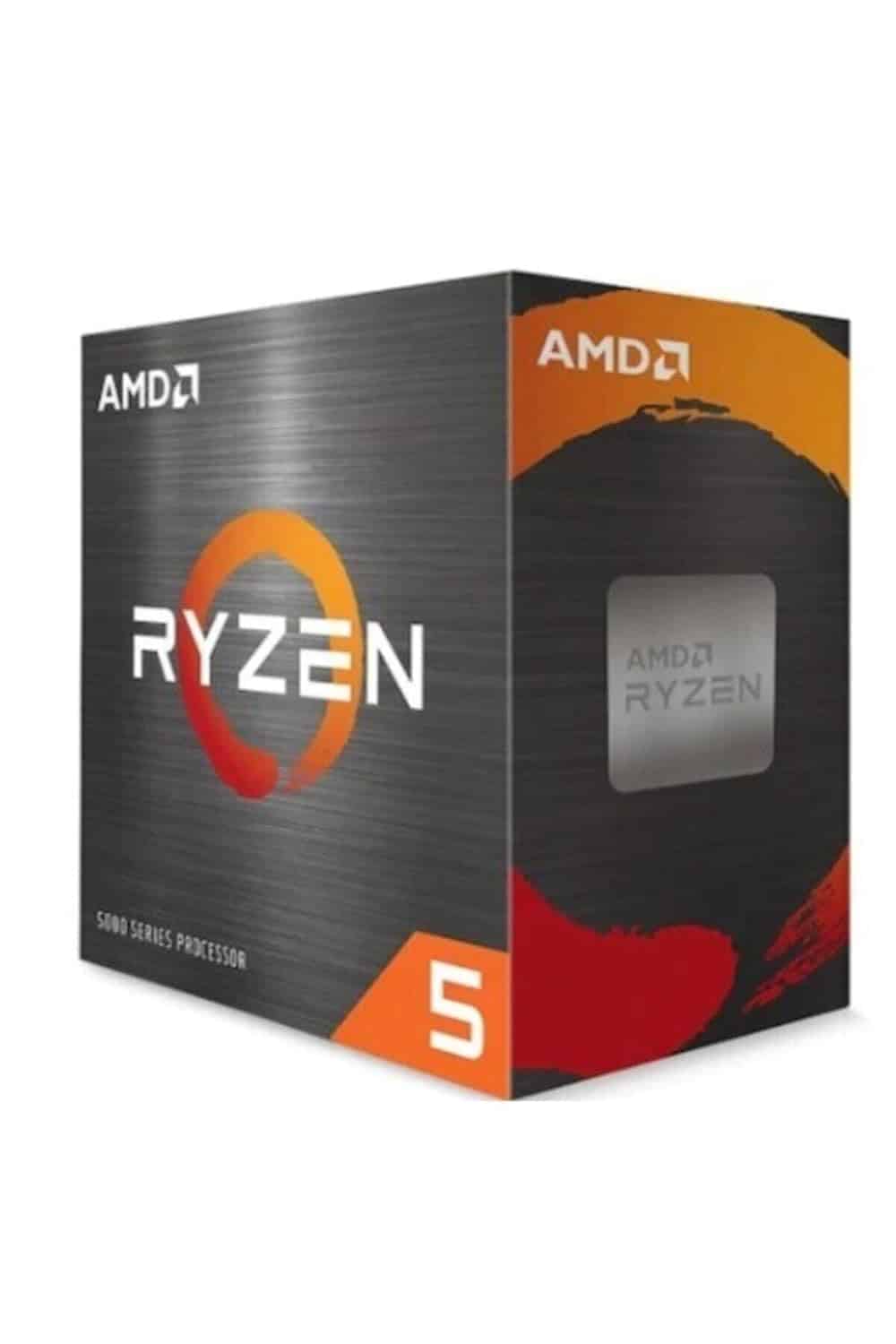
The Ryzen 5 5600 and 5600X offer a great balance of performance and efficiency. These are excellent choices for gaming rigs with discrete GPUs and offer excellent single-thread performance.
Pros:
- PCIe 4.0 support
- Strong gaming performance
- Great value for the money
Cons:
- No integrated GPU
- 5600X costs slightly more for marginal gain
AMD Ryzen 5 5600GT – Budget APU Alternative
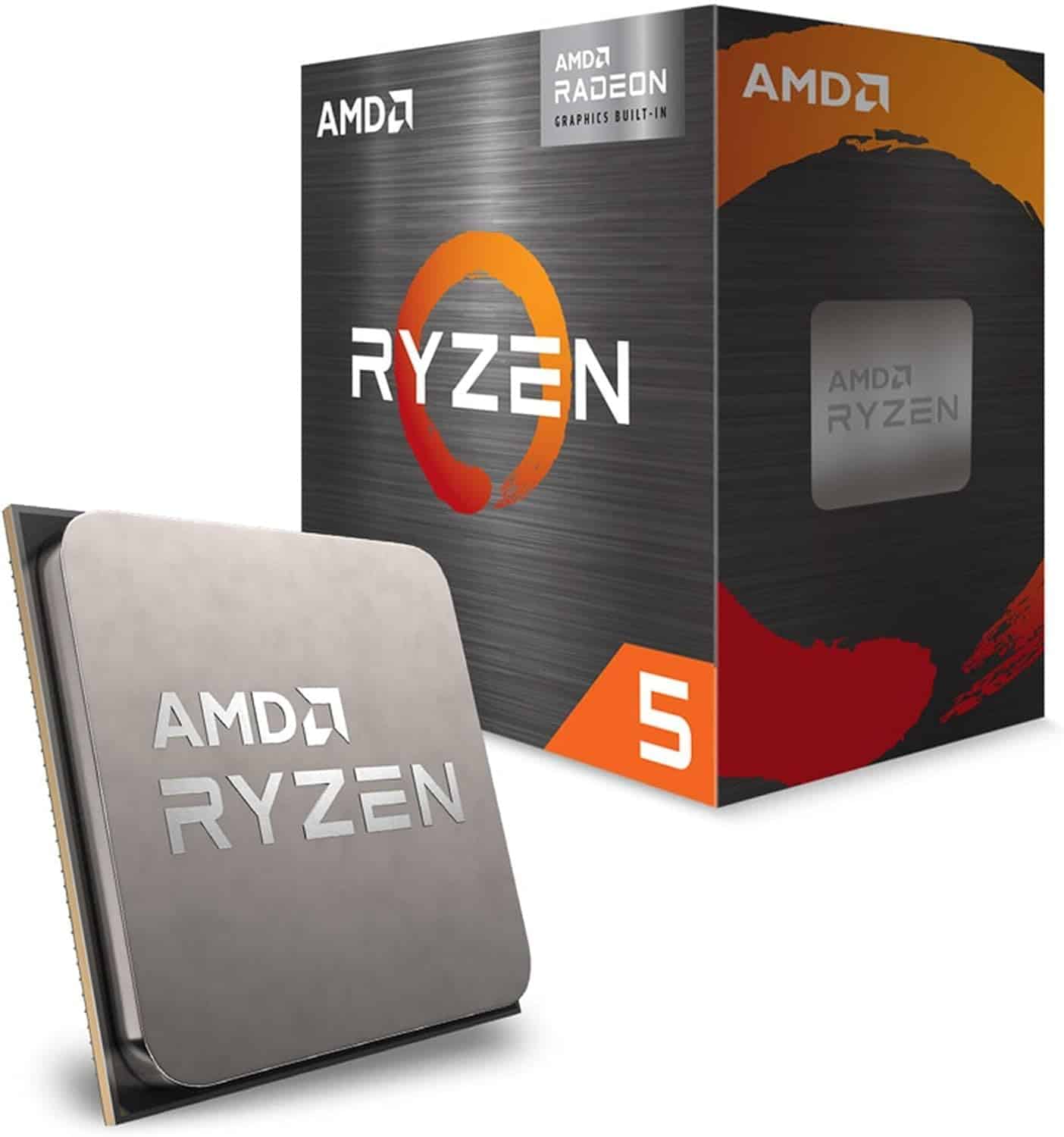
The 5600GT is a hybrid offering similar performance to the 5600X but includes integrated Radeon graphics, making it ideal for office PCs, HTPCs, or light gaming setups without a GPU.
Pros:
- Radeon graphics included
- High boost clock (4.6 GHz)
- Zen 3 efficiency
Cons:
- Slightly less L3 cache than the 5600X
- Limited PCIe bandwidth
AMD Ryzen 5 5600T & 5600XT – For Advanced Workloads
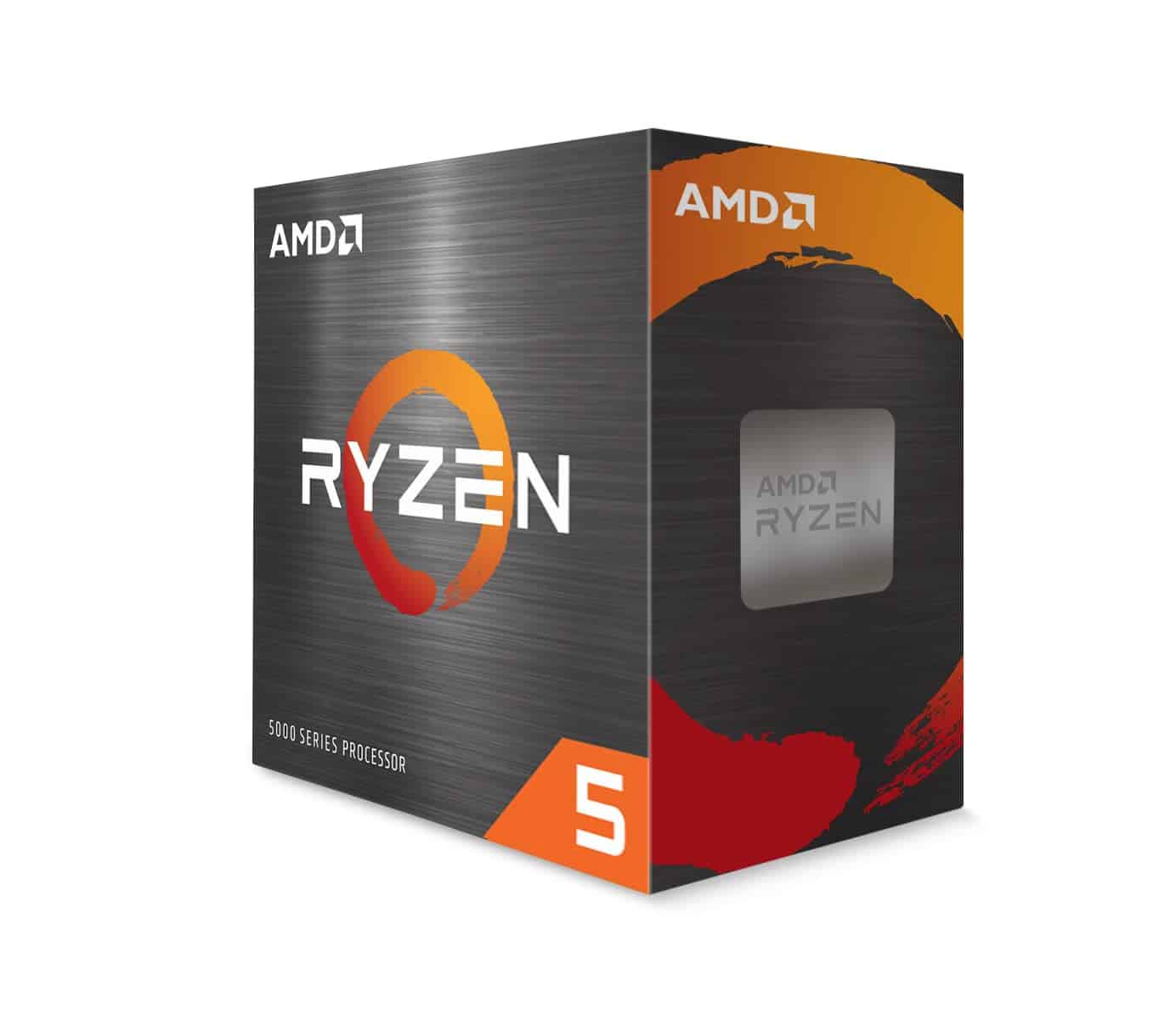
These variants of the 5600 series are excellent for multitaskers and light creators. The 5600XT, in particular, is tuned for gamers who want a boost over the standard 5600X.
Pros:
- High boost clocks
- 32MB L3 cache
- Overclocking support
Cons:
- No integrated GPU
- Requires quality cooling for overclocking
AMD Ryzen 5 7600 & 7600X – New Generation, New Socket
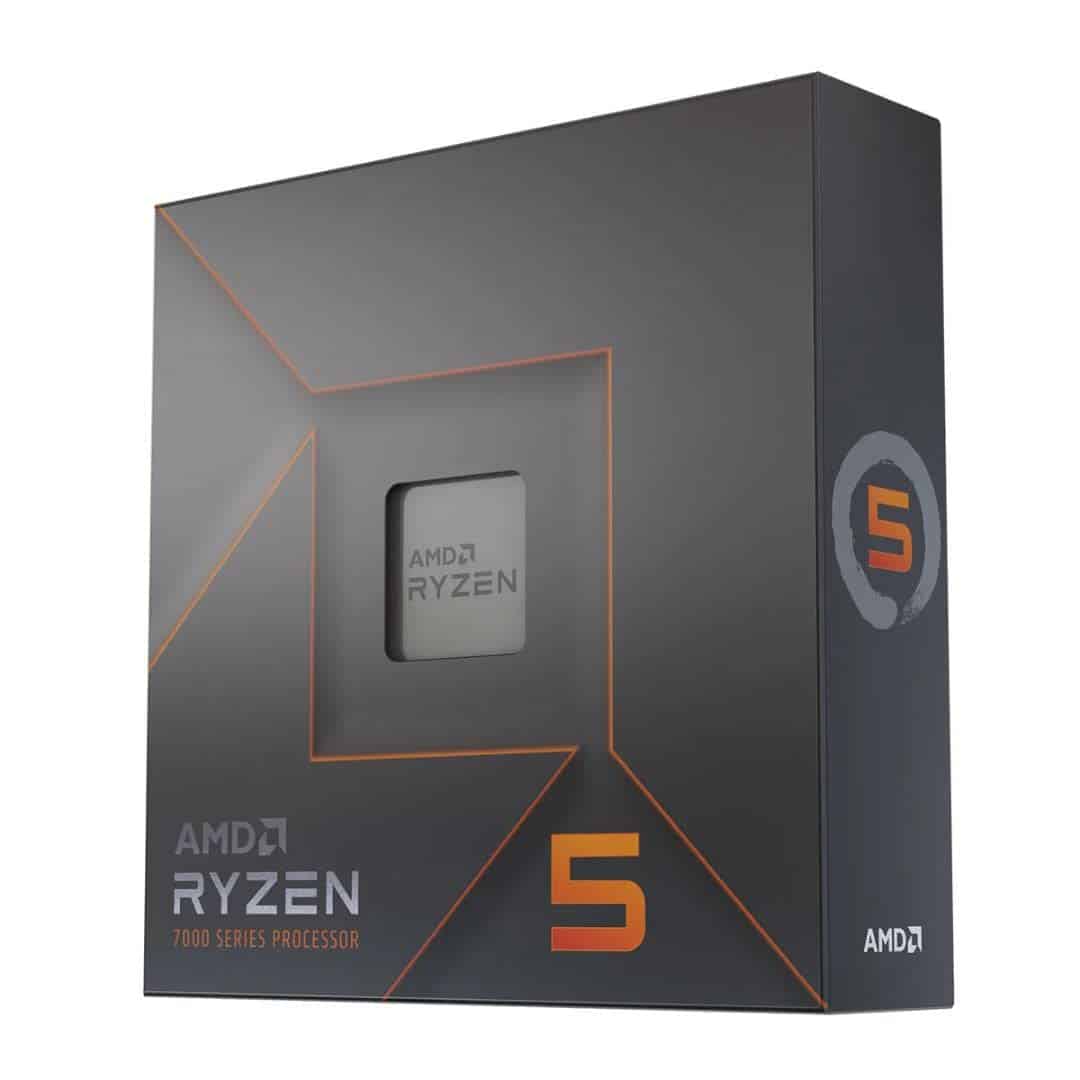
Built on the Zen 4 architecture, the Ryzen 5 7600 and 7600X bring DDR5 memory support, AM5 socket, and PCIe 5.0/4.0 into the mix. They include integrated Radeon graphics, making them viable even without a GPU.
Pros:
- Zen 4 performance
- Future-proof with DDR5 & PCIe 5.0
- Integrated graphics
Cons:
- Requires AM5 motherboard
- 7600X has higher power draw (105W) and no cooler
AMD Ryzen 5 8500G – Best for iGPU-Driven Builds
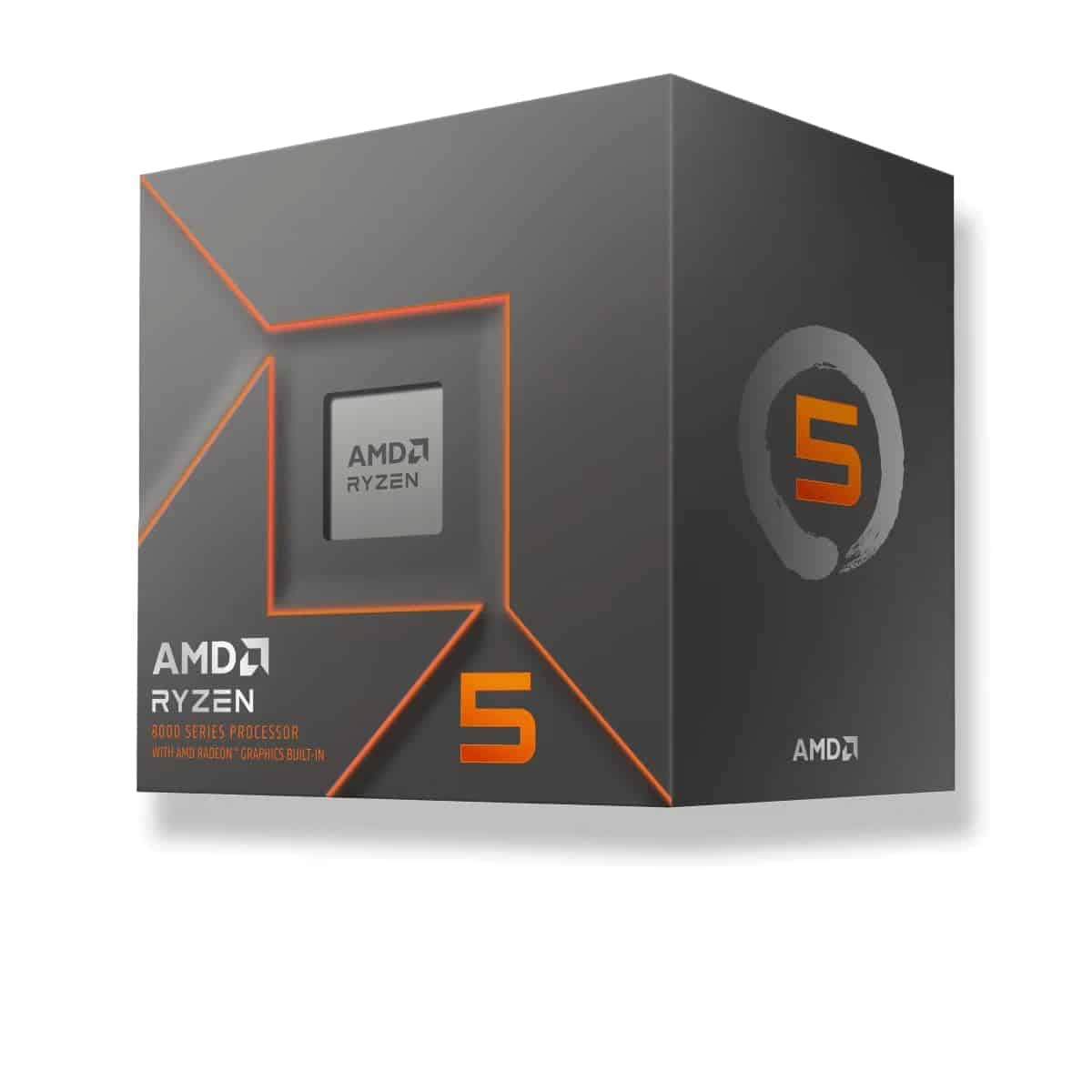
The Ryzen 5 8500G is part of the 8000 series APUs, offering decent graphics performance and Zen 4 processing power in a single package.
Pros:
- Strong iGPU performance
- Up to 5.0 GHz boost
- Energy-efficient
Cons:
- Limited L3 cache compared to others
- Not ideal for heavy rendering or gaming with discrete GPU
AMD Ryzen 5 9600X – The Zen 5 Beast
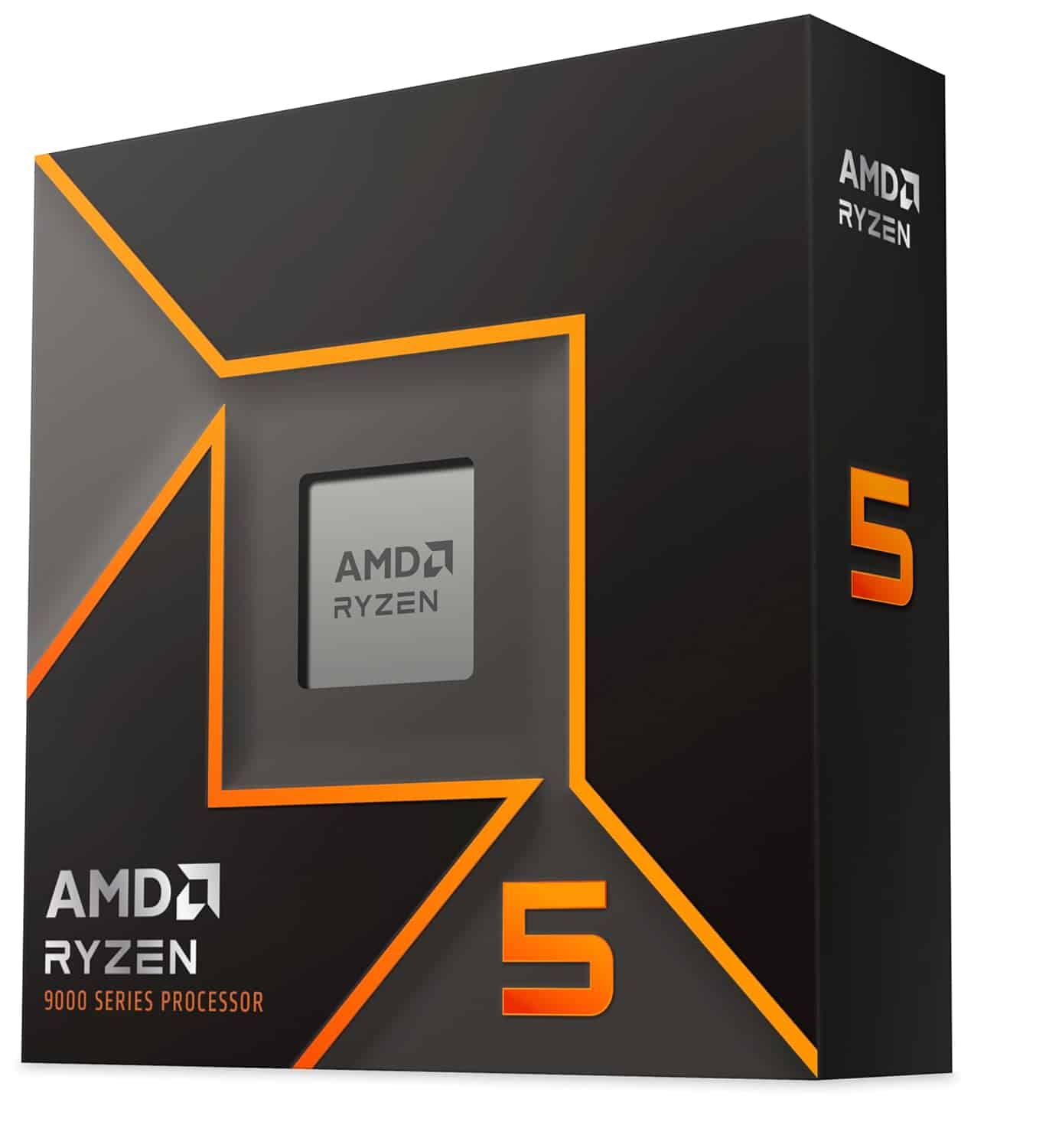
As part of the latest Zen 5 architecture, the Ryzen 5 9600X is designed for high-performance gaming and content creation. With a boost clock of 5.4 GHz, this chip rivals some Ryzen 7 models in real-world usage.
Pros:
- Highest clock speed in Ryzen 5 family
- Zen 5 efficiency and performance
- DDR5 and PCIe 5.0 support
Cons:
- Premium pricing
- Requires new AM5 ecosystem (motherboard + DDR5 RAM)
Which Ryzen 5 Should You Choose?
For Budget Users:
- Best Choice: Ryzen 5 5500 / 3400G
- Why? Affordable, solid performance, AM4 socket
For Gamers:
- Best Choice: Ryzen 5 5600X / 5600XT
- Why? High performance, PCIe 4.0, great value
For Creators:
- Best Choice: Ryzen 5 5600XT / 9600X
- Why? Higher clock speed and L3 cache
For Future-Proof Builds:
- Best Choice: Ryzen 5 7600X / 9600X
- Why? AM5 support, DDR5, PCIe 5.0
For Systems Without a GPU:
- Best Choice: Ryzen 5 5600GT / 7600 / 8500G
- Why? Integrated Radeon graphics, strong CPU performance
Ryzen 5: The Smart Mid-Range Bet
AMD’s Ryzen 5 family continues to dominate the mid-range market by delivering consistent performance across generations. With modern features like unlocked overclocking, PCIe Gen 4/5, DDR5 support, and integrated Radeon graphics, it caters to every type of user—from casual users to hardcore gamers and professionals.
The backward compatibility of AM4 socket processors adds incredible value, while the transition to AM5 architecture opens up possibilities for next-gen computing.
Final Thoughts
Choosing the right Ryzen 5 processor depends on your specific needs:
- Budget? → Go for Ryzen 5 5500
- Gaming? → Choose 5600X or 5600XT
- No GPU? → Pick 5600GT, 7600, or 8500G
- Future-ready? → Opt for 7600X or 9600X
AMD has created a diverse Ryzen 5 ecosystem, offering something powerful and future-proof for every price bracket.
2 thoughts on “Best AMD Ryzen 5 Desktop Processors from 3000 to 7000 Series: Ultimate Comparison”